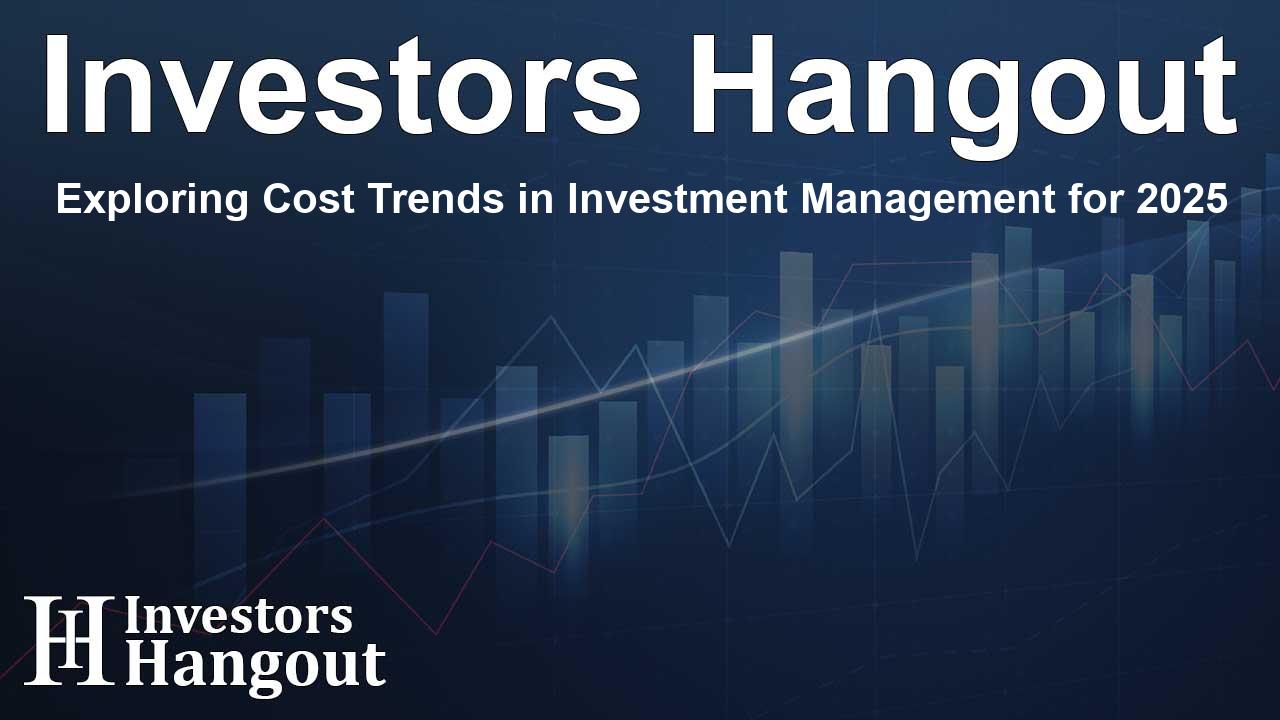Exploring Cost Trends in Investment Management for 2025

Understanding 2025 Investment Management Fee Trends
Callan, a prominent institutional investment consulting firm, has published the findings of its latest study, shedding light on the cost dynamics faced by institutional investors in the investment management landscape. The comprehensive report is based on a thorough analysis of 180 asset pools, showcasing a staggering total of over $772 billion in assets. This study provides crucial insights into the fees associated with investment management, reflecting trends that have evolved since 2010.
Significance of Investment Management Fees
The 2025 Cost of Doing Business Study offers invaluable benchmarks for institutional investors who continually seek to understand the cost-effectiveness of their investment strategies. According to Ivan 'Butch' Cliff, executive vice president and director of research at Callan, the findings reveal that while efforts are being made to reduce fees across various asset classes, a notable shift towards alternative investments is leading to an overall increase in total fund costs for many investors.
Key Findings of the Study
The study highlights several critical findings regarding investment management fees:
- The average total investment management fees stand at 40 basis points across all types of investors, including nonprofits, public funds, corporate funds, and insurance pools.
- Asset allocation decisions significantly impact total fund fees. As institutional investors allocate more towards private equity, private credit, and real assets, they are often willing to accept higher fees in exchange for potential diversification and better returns.
- Nonprofits have seen an increase in average fees by 16% since 2020, contrasting with reductions in fees for corporate (down 17%) and public funds (down 4%).
- Larger funds typically incur total fees that are 24%–37% higher than smaller funds, primarily due to their increased allocation towards alternative assets.
- Despite some cost savings achieved through passive strategies and consolidation of managers, these reductions are frequently offset by increased investments in more expensive asset classes.
Longitudinal Data Insights
Callan has been consistently publishing these updates since 1998, with this year's report including data drawn from a proprietary custody fee database. This addition equips institutional investors with deeper insights into their costs and further delineates the types and sizes of funds involved:
- Nonprofit entities are categorized into two distinct groups based on their asset size: those above and below $1 billion.
- Corporate funds are analyzed based on their plan types, distinguishing between total return and liability-driven plans, along with asset size classifications similar to nonprofits.
- Public funds undergo categorization based on asset size into three groups: over $10 billion, over $1 billion, and under $1 billion.
- For the first time, the study includes insurance pools, broadening the applicability of the data presented.
Broader Implications for Institutional Investors
The findings from Callan's research not only present a snapshot of current fee structures but also guide institutional investors in making informed decisions about their investment strategies. With growing allocations to alternative investments, understanding these fee dynamics becomes essential for optimizing costs and achieving desired returns.
About Callan
Established in 1973, Callan has evolved into an employee-owned investment consulting firm dedicated to providing institutional clients with tailored investment solutions. With assets exceeding $3 trillion under advisement, Callan stands among the largest independent investment consulting firms in the United States. The company prides itself on a client-centered consulting approach, catering to pension plan sponsors, endowments, foundations, independent advisers, and asset managers. Callan maintains a strong presence with six offices nationwide.
Frequently Asked Questions
What is the focus of Callan's 2025 Cost of Doing Business Study?
The study centers on investment management fees incurred by institutional investors and analyzes trends over the years.
How does asset allocation influence investment fees?
Shifts toward alternative investments are leading to higher fees as institutional investors pursue diversification and anticipated returns.
What key trends were identified for different investor types?
Nonprofits have seen an increase in fees, while corporate and public funds have experienced decreases since 2020.
How does the study categorize funds?
Funds are categorized based on type and size, helping investors easily understand their fee structures.
What services does Callan offer?
Callan provides consulting services to a wide range of institutional clients, offering customized investment strategies backed by research and data.
About The Author
Contact Hannah Lewis privately here. Or send an email with ATTN: Hannah Lewis as the subject to contact@investorshangout.com.
About Investors Hangout
Investors Hangout is a leading online stock forum for financial discussion and learning, offering a wide range of free tools and resources. It draws in traders of all levels, who exchange market knowledge, investigate trading tactics, and keep an eye on industry developments in real time. Featuring financial articles, stock message boards, quotes, charts, company profiles, and live news updates. Through cooperative learning and a wealth of informational resources, it helps users from novices creating their first portfolios to experts honing their techniques. Join Investors Hangout today: https://investorshangout.com/
The content of this article is based on factual, publicly available information and does not represent legal, financial, or investment advice. Investors Hangout does not offer financial advice, and the author is not a licensed financial advisor. Consult a qualified advisor before making any financial or investment decisions based on this article. This article should not be considered advice to purchase, sell, or hold any securities or other investments. If any of the material provided here is inaccurate, please contact us for corrections.
